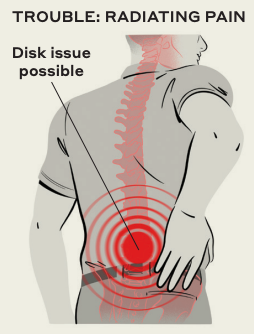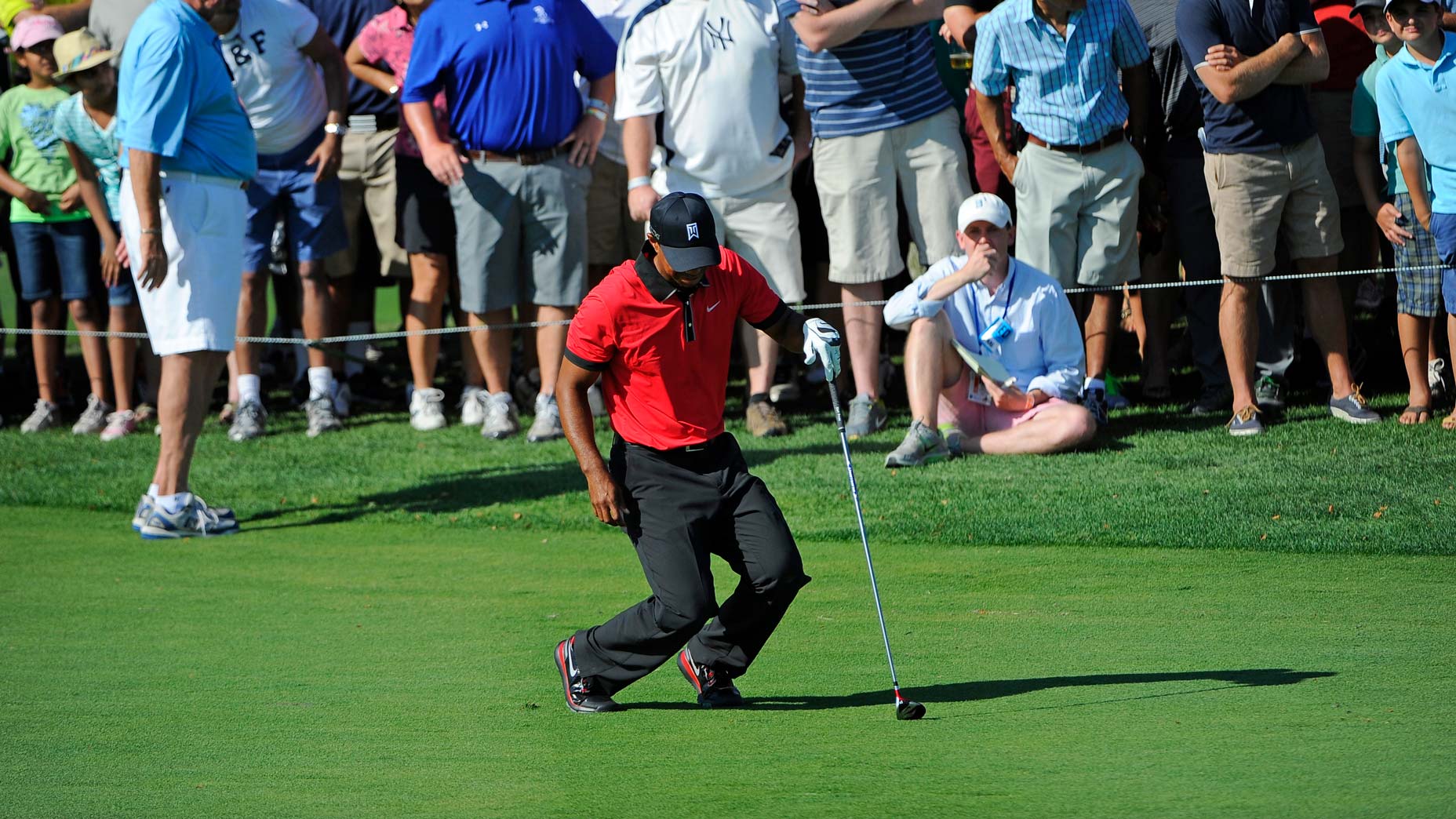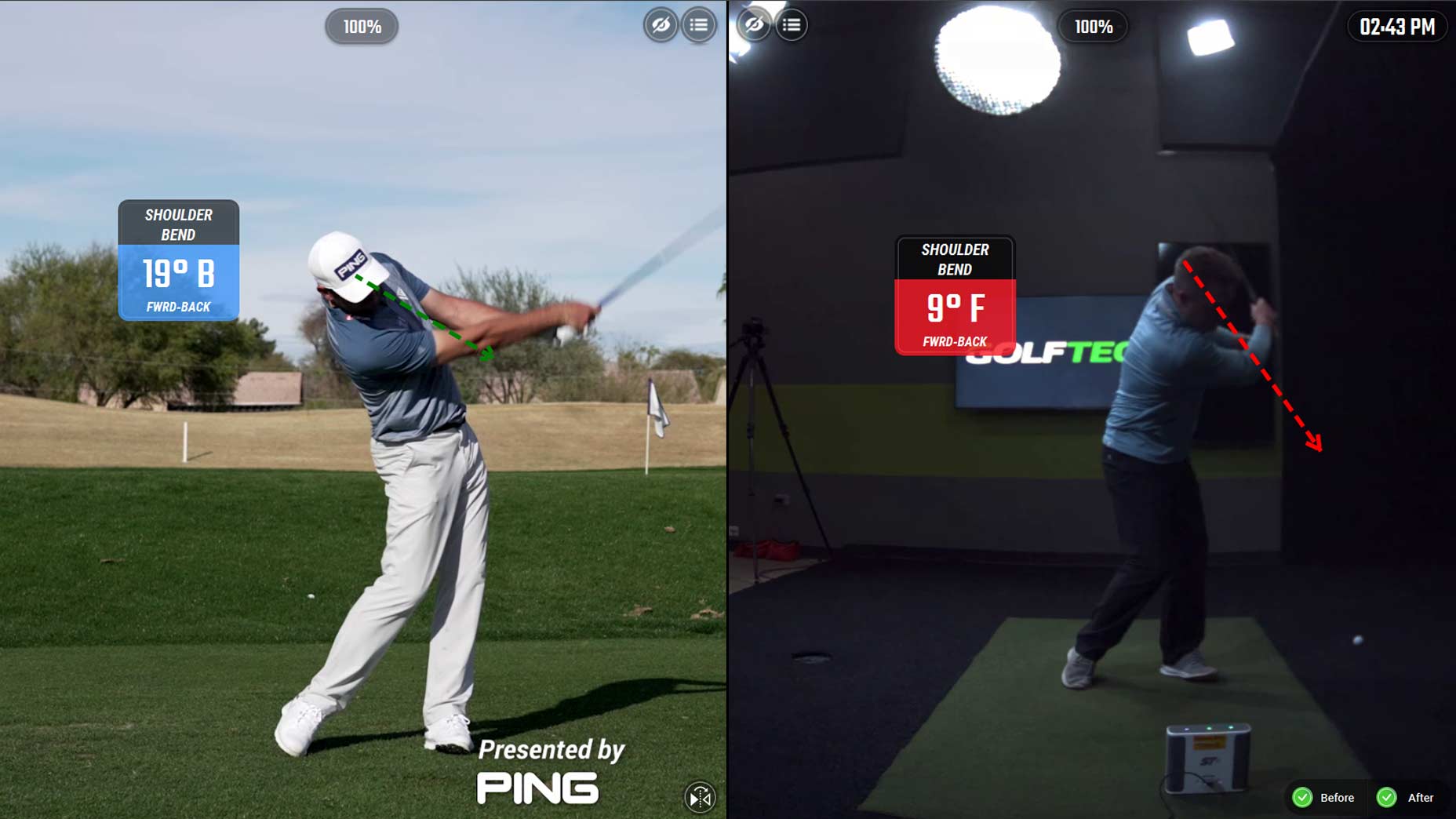Most bad backs in golf, like the common strain, are cumulative, caused by overuse. Carrying a bag on one shoulder doesn’t help, nor do poor mechanics, being overweight or aging (which still beats the alternative). The modern rotation-centric, torque-heavy golf swing also puts more stressors on the low back. A pro-level swing’s compressive forces can reach up to eight times one’s body weight post impact — comparable to a football lineman hitting a blocking sled!
Symptoms: Pain is very localized with a back strain. Only if it radiates to the buttocks or lower extremities is it likely there’s a disk pushing on a nerve. You can feel a strain bending both forward and backward, while disk-related pain tends to worsen bending forward.
Self-Care: Don’t overdo the bed rest — movement helps with a strain. Over-the-counter anti-inflammatories are fine, too. You apply ice for most injuries at an acute stage, but not for the low back, as those muscles tend to tighten when very cold. Instead, use moist heat like a warm bath, shower or Jacuzzi to relax the muscle spasm.

If your day job requires lots of sitting, make sure to stand now and then to relieve back stress. In terms of your comeback, listen to your body. Start with chipping and putting, waiting until you feel back to normal before playing again — rush things and you’ll return to square one. An overall strengthening and flexibility program is key both to recovery and prevention; pre round, warming up and getting the blood flowing (soft swings and/or a quick, brisk walk) trumps stretching.
Doctor Visit: If you see no improvement and experience continued discomfort after a couple of weeks, you should have an evaluation. Pain radiating into the buttocks or a lower extremity is another reason to go see your doctor, as is weakness in a lower extremity. If you’ve had back strains before and something about this one just feels different, listen to that voice telling you to get it checked out.










